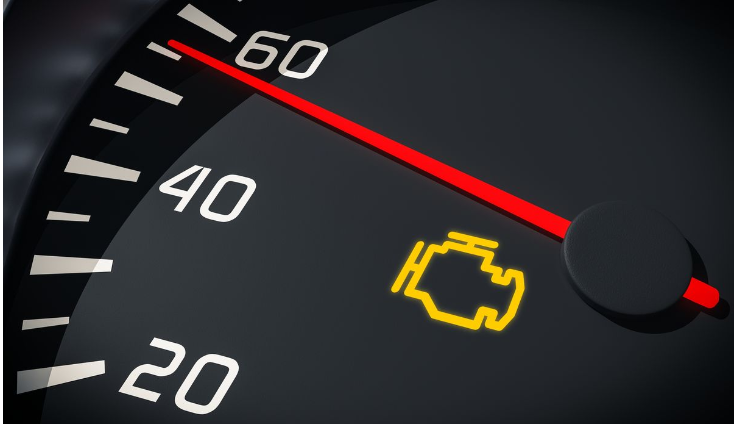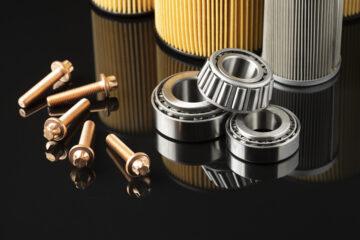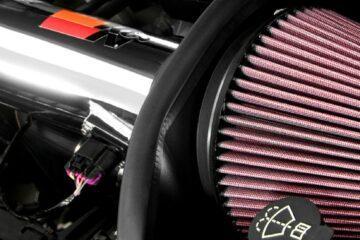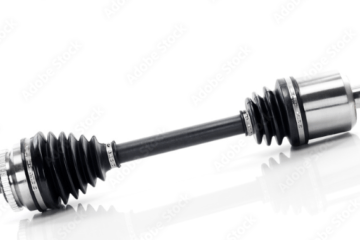- A car engine water pump is a mechanical pump that circulates coolant through the engine’s cooling system. The water pump is driven by a belt connected to the engine’s crankshaft. The pump uses centrifugal force to move the coolant through the engine’s cooling system, which helps to keep the engine at a safe operating temperature.
It is typically located in the front of the engine, near the radiator. It is usually mounted on the engine block or cylinder head.
Made up of a housing, impeller, and shaft. The housing is the outer shell of the pump. The impeller is a rotating device that has vanes or blades on it. The shaft is the axle that the impeller is attached to.
It is driven by a belt connected to the engine’s crankshaft and when the engine runs, the belt turns the shaft of the water pump. The impeller spins, creating centrifugal force that pushes the coolant out of the center of the pump and into the engine’s cooling system.
For replacement, the water pump will be worn and will eventually need to be changed. The average lifespan of a water pump is 50,000 to 100,000 miles. However, it is important to have the water pump checked regularly by a qualified mechanic, as it may need to be replaced sooner if it is damaged or defective.
The water pump is a vital part of the engine’s cooling system, and a failure can lead to engine overheating and damage.
Here are some of the signs that your water pump may need to be replaced:
- Coolant leaks
There are a few possible causes of a coolant leak at the front center of your car. These include:
- Radiator: The radiator is a large metal container that helps to cool the engine. It is located in the front of the car, and it is possible for the radiator to develop a leak.
- Water pump: The water pump is a pump that circulates coolant through the engine. It is also located in the front of the car, and it is possible for the water pump to develop a leak.
- Thermostat: The thermostat is a valve that controls the flow of coolant through the engine. It is located near the water pump, and it is possible for the thermostat to develop a leak.
- Hoses: The hoses that connect the radiator, water pump, and thermostat can also develop leaks.
If you notice a coolant leak at the front center of your car, it is important to have it repaired as soon as possible. A coolant leak can cause your car to overheat, which can damage the engine.
To diagnose the cause of the leak, a mechanic will typically:
- Inspect the radiator, water pump, thermostat, and hoses for signs of damage.
- Check the coolant level in the radiator.
- Run the engine and look for signs of leaks.
Once the cause of the leak has been identified, the mechanic will be able to repair it. The cost of repair will vary depending on the severity of the leak and the make and model of your car.
Here are some tips to help prevent coolant leaks:
- Check the coolant level in the radiator regularly and add coolant as needed.
- Have the radiator, water pump, thermostat, and hoses inspected and replaced as needed.
- Avoid driving over rough terrain, which can damage the radiator and hoses.
- Don’t overfill the radiator.
- Use the correct type of coolant for your car.
- Engine overheating
Yes, a bad water pump can cause your engine to overheat. The water pump is responsible for circulating coolant through the engine, and if it fails, the coolant will not be able to flow properly and the engine will overheat.
Here are some signs that your water pump may be failing:
- Engine overheating: This is the most obvious sign of a bad water pump. If your engine temperature gauge starts to rise, pull over and turn off the car immediately.
- Coolant leaks: If you see any signs of coolant leaking from under the hood, this could be a sign of a water pump leak.
- High-pitched noise: If you hear a high-pitched noise coming from the engine, this could be a sign that the water pump bearing is failing.
- Check engine light: If your check engine light comes on, this could be a sign of a number of problems, including a bad water pump.
If you suspect that your water pump may be failing, it is important to have it checked by a mechanic as soon as possible. A failed water pump can cause serious damage to your engine, so it is important to get it fixed as soon as possible.
The cost of replacing a water pump will vary depending on the make and model of your car, but it is generally a relatively affordable repair. The average cost of replacing a water pump is around $300-$500.
- Loss of power
The water pump is responsible for circulating coolant throughout the engine, which helps to keep the engine cool. If the water pump fails, the coolant will not be circulated properly and the engine will overheat. This can cause the engine to lose power and eventually fail.
- Strange noises coming from the engine
There are a few different noises that can come from a car water pump, and each one can indicate a different problem. Here are some of the most common noises and what they mean:
- Squealing: This is the most common noise that indicates a problem with a water pump. It is caused by the bearings in the pump wearing out and allowing the pump to wobble. This can cause the pump to lose efficiency and can eventually lead to the pump failing.
- Rattling: This noise is usually caused by a loose or damaged impeller. The impeller is a spinning wheel inside the pump that helps to circulate coolant. If it is loose or damaged, it can cause the pump to rattle.
- Whirring: This noise is usually caused by a worn or damaged shaft. The shaft is the rod that the impeller is attached to. If it is worn or damaged, it can cause the pump to wobble and make a whirring noise.
- Knocking: This noise is usually caused by a failing bearing. The bearings support the shaft and keep it from wobbling. If they fail, they can cause the shaft to wobble and make a knocking noise.
- Vibrations from the engine
Vibrations from the engine car water pump can be caused by a number of things, including:
- Loose or damaged bearings: The bearings in the water pump support the shaft and keep it from wobbling. If they are loose or damaged, it can cause the shaft to wobble and the pump to vibrate.
- Improper belt tension: The water pump is usually driven by a belt. If the belt is not properly tensioned, it can cause the pump to wobble and vibrate.
- Defective impeller: The impeller is a spinning wheel inside the pump that helps to circulate coolant. If it is defective, it can cause the pump to vibrate.
- Clogged hoses: The water pump circulates coolant through a network of hoses. If the hoses are clogged, it can restrict the flow of coolant and cause the pump to overheat and vibrate.
- Coolant leak: A coolant leak can cause the water pump to overheat and vibrate.
- A check engine light

A check engine light does not necessarily mean that you need to replace your water pump. A check engine light can be caused by a variety of problems, including a bad water pump, but it is important to have the light checked by a mechanic to determine the exact cause.
Here are some of the other problems that can cause a check engine light:
- Engine misfires: This is when the engine does not fire all of its cylinders properly. It can be caused by a number of things, including bad spark plugs, bad coils, or a bad timing belt.
- Plugged catalytic converter: This is a device that helps to reduce emissions from the engine. It can become plugged with soot and other deposits, which can cause the check engine light to come on.
- Bad oxygen sensor: This sensor monitors the amount of oxygen in the exhaust stream. If it is bad, it can cause the engine to run rich or lean, which can cause the check engine light to come on.
- Bad mass air flow sensor: This sensor monitors the amount of air entering the engine. If it is bad, it can cause the engine to run rich or lean, which can cause the check engine light to come on.
- If you notice any of these signs, it is important to have the water pump checked by a qualified mechanic as soon as possible. A failed water pump can cause serious damage to the engine, so it is important to take care of it as soon as possible.
Here are some of the common types of water pumps:
- Centrifugal water pumps: These are the most common type of water pump. They use centrifugal force to move the coolant through the cooling system.
2. Gear-driven water pumps: These water pumps are driven by a gear train. They are less common than centrifugal water pumps, but they are often used in high-performance engines.
3. Electric water pumps: These water pumps are driven by an electric motor. They are becoming more common, as they offer a number of advantages over traditional water pumps, such as being quieter and more efficient.
The water pump is a relatively simple component, but it is an important one. If it fails, it can cause serious damage to the engine. It is important to have the water pump checked regularly and replaced as needed.
Here are some tips for extending the life of your water pump:
Keep the coolant levels in your car topped off.
Change the coolant according to the manufacturer’s recommendations.
Have the water pump checked regularly by a qualified mechanic.
Here are some do’s and don’ts when it comes to car engine water pumps:
Dos:
- Check the water pump regularly. The water pump is a critical part of your car’s cooling system, so it’s important to check it regularly for signs of wear and tear.
- Replace the water pump if it’s leaking or making noise. A leaking or noisy water pump is a sign that it’s failing, and it’s important to replace it as soon as possible to prevent engine damage.
- Use the correct type of coolant. The type of coolant you use can affect the lifespan of your water pump. Be sure to use the type of coolant recommended by your car’s manufacturer.
- Flush the cooling system regularly. Flushing the cooling system removes contaminants that can damage the water pump.
Don’ts:
- Don’t ignore signs of a failing water pump. If you notice any signs that your water pump is failing, such as leaks, noise, or overheating, don’t ignore them. Get it checked out by a mechanic as soon as possible.
- Don’t use the wrong type of coolant. Using the wrong type of coolant can damage the water pump and shorten its lifespan.
- Don’t neglect regular maintenance. Regular maintenance, such as checking the water pump for leaks and noise, can help to extend the lifespan of your water pump.
By following these do’s and don’ts, you can help to keep your car’s water pump running smoothly and prevent engine damage.
Additional tips for replacing a water pump:
- Make sure you have the correct replacement water pump. The water pump must be the correct size and type for your car.
- Replace all of the gaskets and seals. Old gaskets and seals can cause leaks.
- Use a torque wrench to tighten the bolts. Overtightening the bolts can damage the water pump.
- Fill the cooling system with the correct type of coolant. Be sure to flush the cooling system before adding new coolant.
- Start the engine and check for leaks. Be sure to check for leaks in the water pump and all of the connections.
By following these tips, you can help to keep your car’s water pump running smoothly, prevent engine damage and ensure that your water pump lasts for the life of your car.




